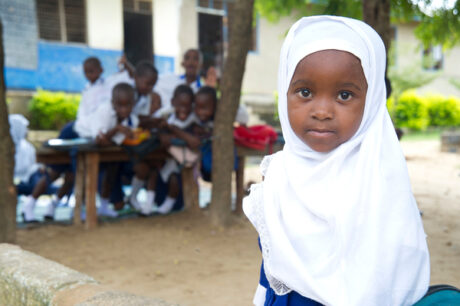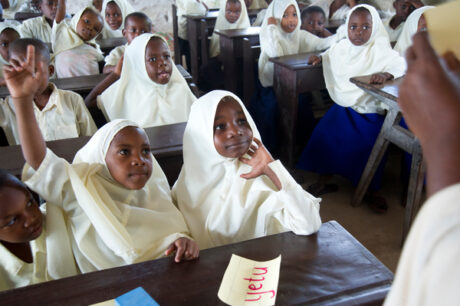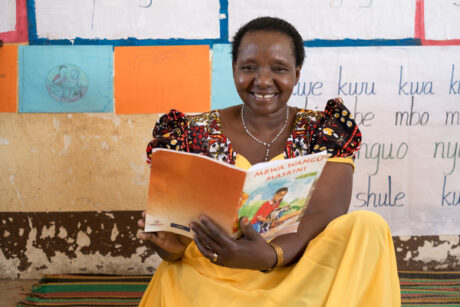A massive baobab tree grows alongside the bumpy dirt road, and just beyond, a handful of children throw rocks and sticks into the boughs of a tall mango tree, attempting to dislodge the ripening fruit. A small line is formed at the local well, with several women holding bright-colored buckets to fill. We drive past a schoolyard and into a clearing where children wielding axes and machetes are chopping down a tree. It is recess for the primary school in Mitengo, located in the Mtwara region of southern Tanzania, and the students are helping with a project at the nearby Teaching Resource Center (TRC). Big changes are happening and many are working hard to ready the facility. Fresh paint on every paintable surface, a facelift for the outhouse and new plants nestled in revitalized planter-boxes. The place is bustling with activity, despite the considerable heat.
Surrounding the TRC are a few houses for students and teachers, a road with mostly bicycles passing by, and a handful of chickens. At first look, it is a fairly typical village scene, where electricity and running water is scarce or non-existent. Then you look a little closer, and there, on the roof of the center, glistening in the sun, are five new solar panels. Inside the freshly painted doors are computers – 20 brand-new desktop machines – all powered by the sun. This scene starkly contrasts the surroundings, and though almost unbelievable, it is entirely real and made possible by USAID’s TZ21 project.
There are many active USAID projects in Tanzania to assist with issues like basic healthcare, HIV/AIDS and malaria, education and agriculture, entre otros. TZ21 began because the Tanzanian government asked USAID for support with an ambitious project aimed to improve the quality of primary school education.
TZ21 aims to integrate Information and Communication Technology (TIC) into primary level education by introducing computers to students, y profesores, for the first time in most cases. The new technologies will help teachers become better teachers, and improve student learning in reading, matemáticas y ciencias. The program will also build decision-making capacity at the Ministry of Education by computerizing grades and reporting. An entire electronic face-lift with a holistic approach of working together, and high hopes of success for bringing Tanzanian education into the highly computerized 21st century.
In Mitengo, it is a special day for many to gather and celebrate on a balmy, November afternoon. A grand re-opening of the TRC is taking place, as well as a meeting of the minds to see how the TZ21 project is coming along. All are pleased with the progress, and many have stories of challenges, triumphs and long hours.
—Jamie Dee Salinas



